Squats are some of the most effective lifts to add to your workout routine. They’re a complex movement that can really show off your strength, are applicable to functional everyday tasks, and are an important part of any leg day.
There’s a reason there’s always a line at the squat rack!
Squats are a powerhouse of a workout that involves several muscle groups, the most obvious being in your legs.
What Muscles Do Squats Work?
The muscles that squats primarily work are:
- Glutes
- Hamstrings
- Quadriceps
- Adductors
- Calves
- Core
Here’s the thing: A classic bodyweight or weighted back squat is going to work all of these different muscle groups in one powerful movement. But in order to get the most out of this lift, you’ll need to do it with the correct form and have a general understanding of how your muscles work in cohesion to make it happen.
Plus, you can take the classic exercise and do variations to put more of the focus on specific muscle groups depending on your goals.
Let’s take a closer look at which muscles squats work, plus explore some squat variations and tips so you can be on your way to a stronger, more explosive lower body.
Glutes
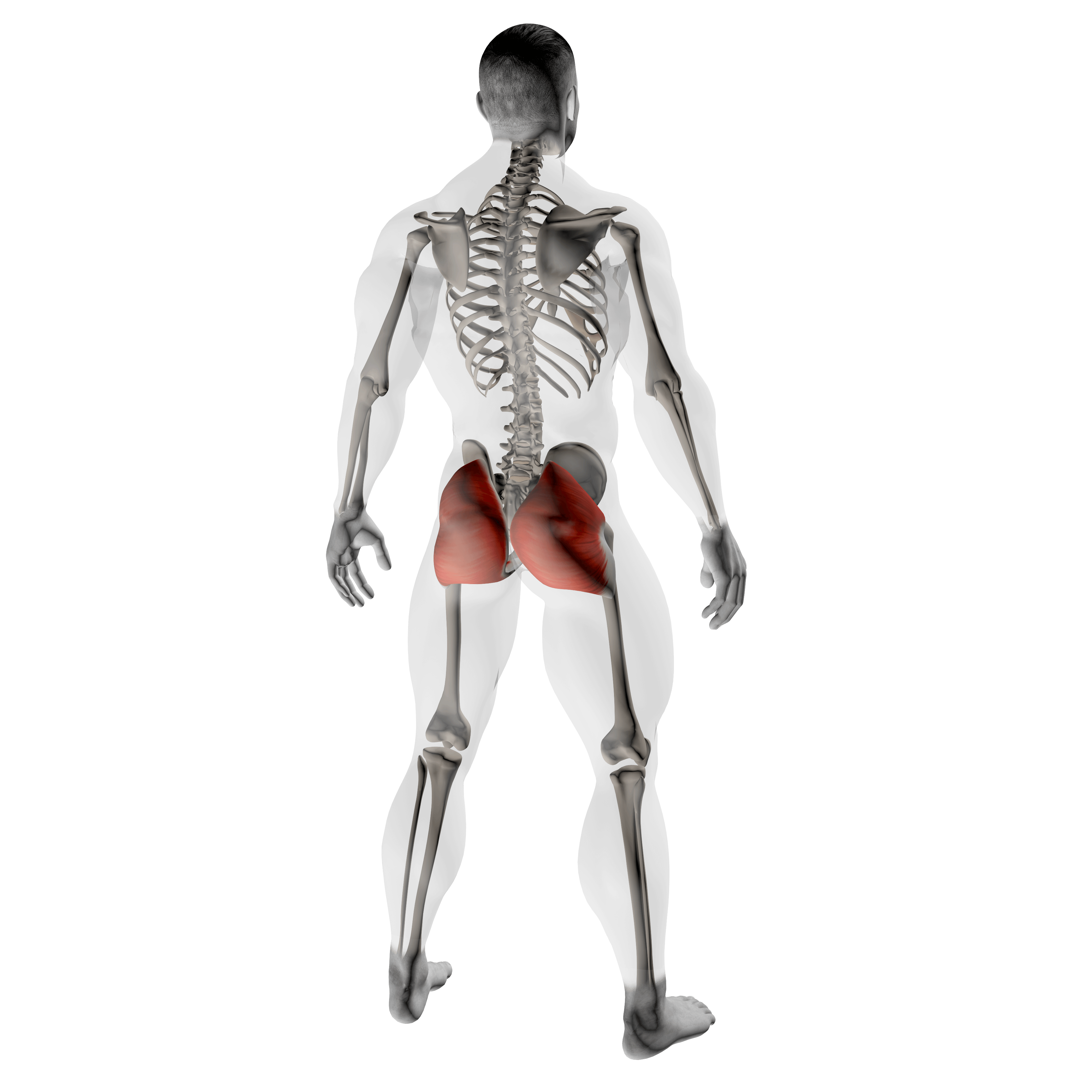
Many people start doing squats because they want to build a firmer butt, and for good reason – squats put a tremendous load on your strong butt muscles, also known as the glutes.
Your glutes are made of three parts: the gluteus maximus, the gluteus minimus, and the gluteus medius. A squat will work all three of these powerful muscles, though the majority of the stress will be on your gluteus maximus.
High-rep bodyweight squats will definitely get your glutes burning, and the butt-building benefits get even better when you add heavy weights into the mix. No matter what variation of squat you perform, your glutes are guaranteed to be involved, and the deeper you squat, the more activated they’ll become.
Squat variation to work your glutes:
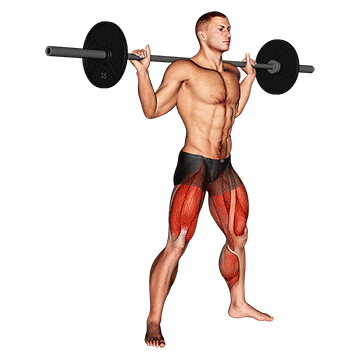
Sumo squats: To activate more of your glutes during a squat, take a wider stance. Stand with your feet slightly further apart than hip-width and with your toes pointing slightly out instead of forward. Descend into a deep squat, making sure to keep your back neutral and not allowing your knees to go forward.
Hamstrings
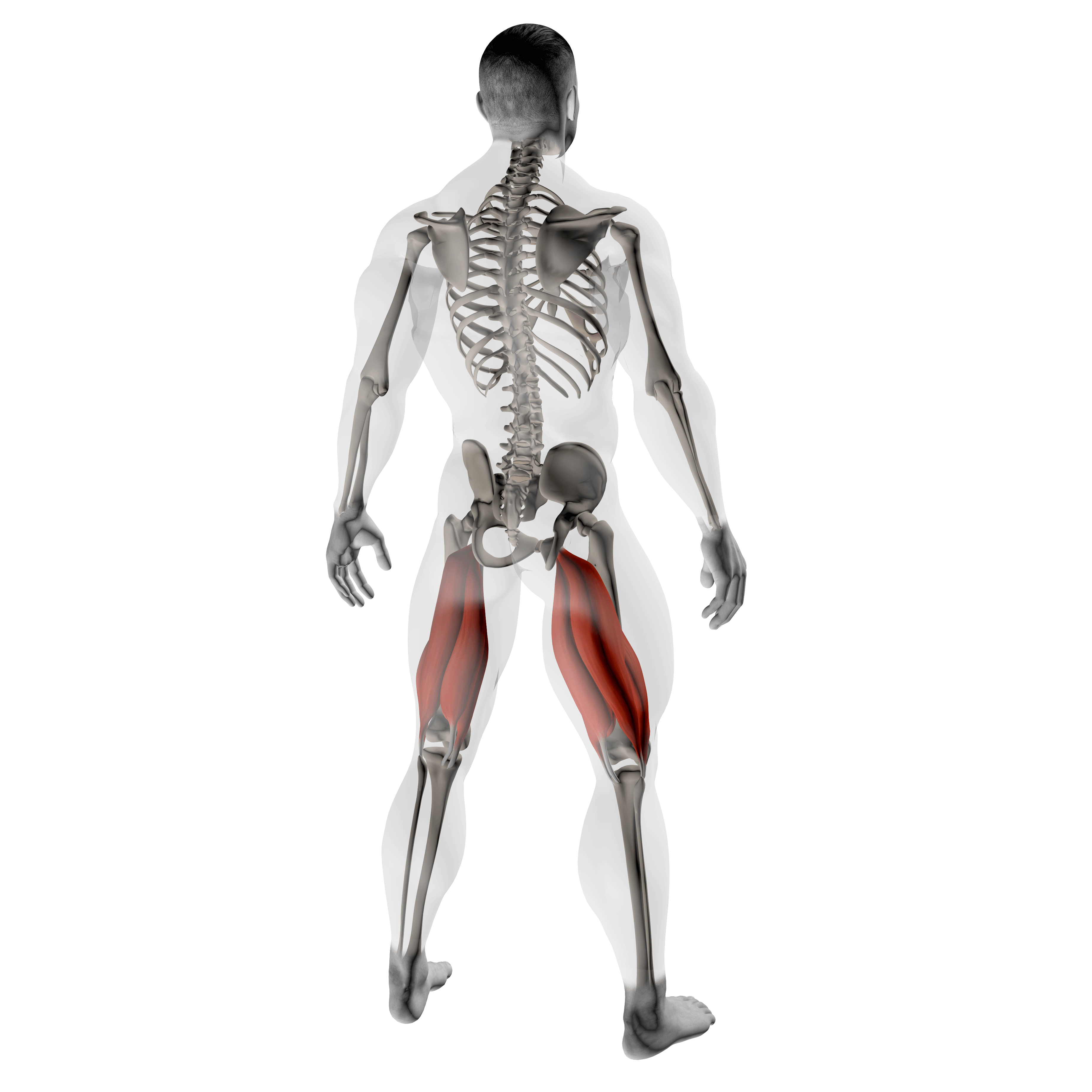
Your hamstrings are the powerful muscles on the back of your thighs that connect your hips to your knees. During a squat, your hamstrings are activated as you descend into the squat and bend your knees. Make sure that you are “sitting back” into the motion with your knees behind your toes.
Developing strong hamstrings will support both your knee and hip joints, plus they’ll keep you stable and look great to boot.
Squat variations for working your hamstrings:
Pause squats: Perform a normal squat, either with just your bodyweight or with added weights, and hold the pose once your thighs become parallel to the ground. Hold this pause for three seconds, then push up to the starting position. 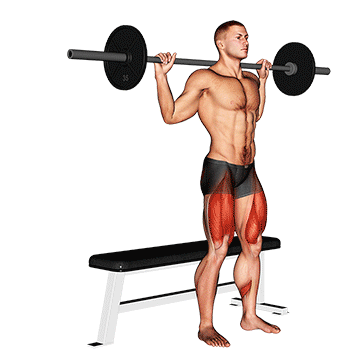
Box/chair squats: Get a stable box, bench, or chair that puts your thighs at parallel or slightly below when you sit on it. Place it behind you then perform the squat movement, “sitting back” on it. Use your leg muscles to push yourself back up to standing.
Quadriceps
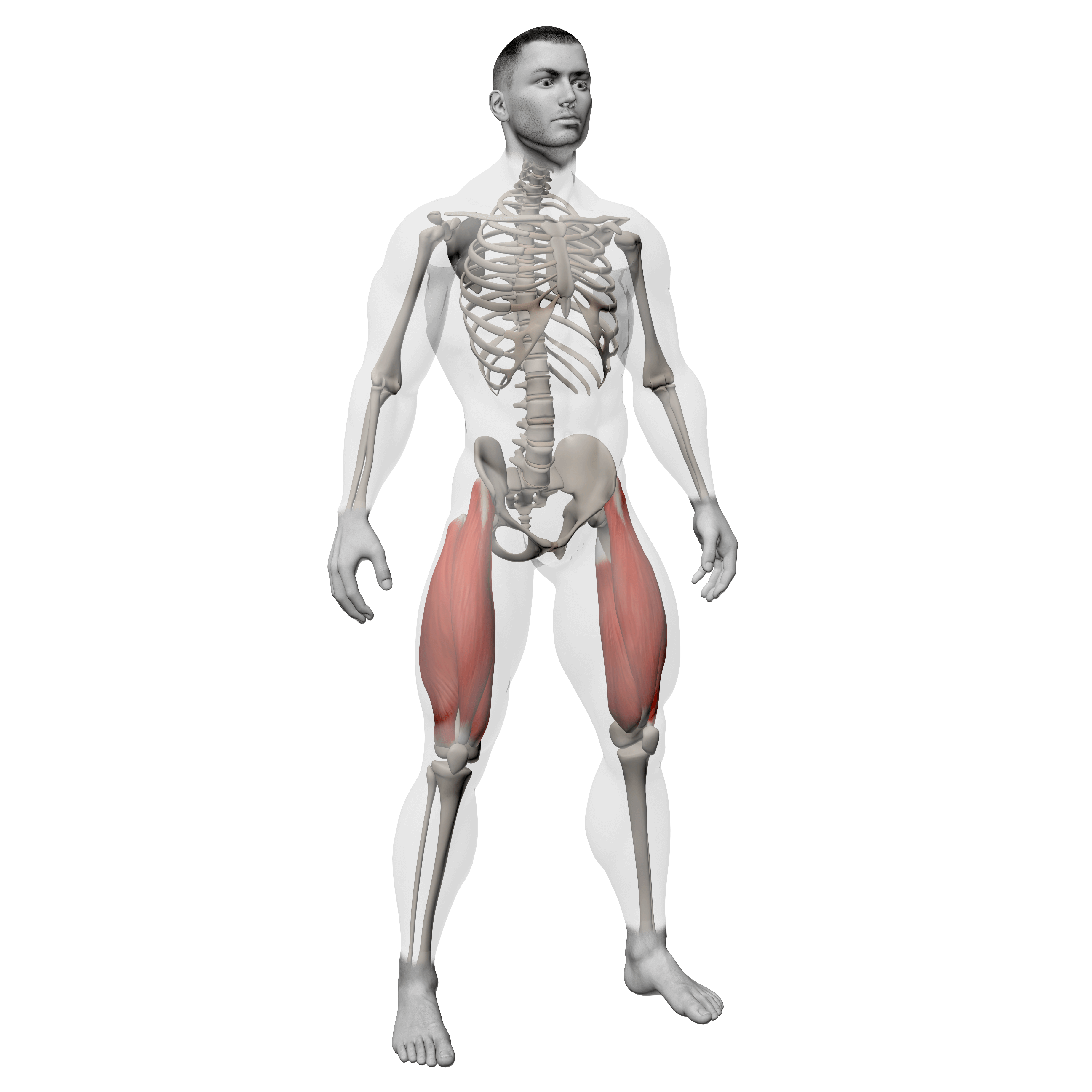
Now let’s move on to the front of your thighs. These muscles are called the quadriceps and are really worked during the “extension” phase of your squats as you push up and straighten your legs, opposite the hamstrings.
In combination with the work of your hamstrings, squats are great for helping you achieve strong, powerful thighs.
Squat variations for your quads:
Front squats: As the name suggests, this squat variation will have your weights on the front part of your body, rather than on your back like with a traditional barbell squat. Hold the barbell or weight securely and perform the traditional squat movement – the shift in weight placement will work your front side a little more than your back.
Pulse squats: This squat variation will really have your quads feeling the burn. Start with a traditional squat, but don’t go all the way back up when you hit parallel; instead, “pulse” into the movement for ten seconds before straightening out, keeping your quads under tension for longer than a normal squat. Repeat a couple more rounds.
Adductors
They may not be as flashy as your glutes, quads, and hamstrings, but your adductors are a crucial muscle that keeps you stable during a squat. You can find these muscles in your inner thighs. They work during your squat by stabilizing your knees, keeping them together rather than splaying outwards.
To really get the most out of your squat and give your inner thighs some love (as well as to prevent injury and knee pain), make sure that your knees stay in line with the direction of your toes and don’t splay inward or outward during the movement.
Calves
Your calves are the muscles at the base of your legs and work during a squat to stabilize you and give you a strong foundation to perform the difficult movement during both the descent and ascent.
Developing strong calves can make you more explosive and balance out the aesthetics of your strong upper legs.
Squat variation for calves:
Jump squats: This squat variation works best if you’re using your body weight or lighter weight than you would use for other weighted squats. Perform a traditional squat, then jump upward as you ascend, making sure you’re moving on the balls of your feet to really work those calves. This is also a great variation to incorporate some cardio into your squat routine.
Core
It may not be the first muscle group that comes into mind when you perform a squat, but core activation is huge for stabilizing your body and keeping your position centered during this exercise. Bracing yourself during a squat is especially important for protecting your spine, especially when doing weighted squats, and will work your abdominals, obliques, and lower back.
Core activation in a squat is supported by having the proper breathing technique:
- Take a deep breath into your abdomen and hold it as you descend into your squat position, increasing the pressure in your abdomen.
- Release your breath as you rise to the top of the movement.
This will protect your back and get your core involved in the movement.
What are the disadvantages of doing squats?
Squats are a well-loved component of many peoples’ fitness routines, but they can be dangerous if not done correctly, and this is especially true when you’re doing heavy weighted squats with a barbell.
Always make sure that you are performing squats with correct form to avoid injury – you want your back to be neutral, your knees behind your toes, your core braced, and your depth to bring your thighs at least parallel to the ground. If you’re not sure about your form, ask a spotter or personal trainer to evaluate your movement, and don’t move on to using heavier weights until you’re confident in your form and ability.
Doing squats can also lead to hip, knee, and back pain, so make sure that you stretch and practice mobility exercises to relieve tightness. It is also a good idea to do other accessory exercises to strengthen all the muscles that you work in a squat – think leg extensions, hamstring curls, and glute bridges, for example.
How long does it take to see results from squats?
There are many factors that play into seeing workout results in your physique, including your body fat percentage and starting muscle size. Someone with a low body fat percentage will show their increased muscle definition must quicker than someone with a higher body fat percentage, for example, since their muscles are not “hidden” by as much fat.
Just like with any exercise or workout plan, consistency is key. If you’re looking to build muscle from doing squats, you may start to see results in one to two months if you continuously practice this exercise (once a week or so) and eat a diet formulated for muscle growth.
With any fitness or weight loss goals, proper nutrition is key. Building muscles requires plenty of protein to rebuild the microtears your leg muscles will get when performing squats, so be sure to eat lots of lean protein to enhance the results of your leg days.
The Bottom Line
Squats have earned their place as one of the most crucial lifts for strength training because they work so many muscles so efficiently. If you’re looking for strong thighs, a powerful butt, and explosive movement, getting your squats in is essential.
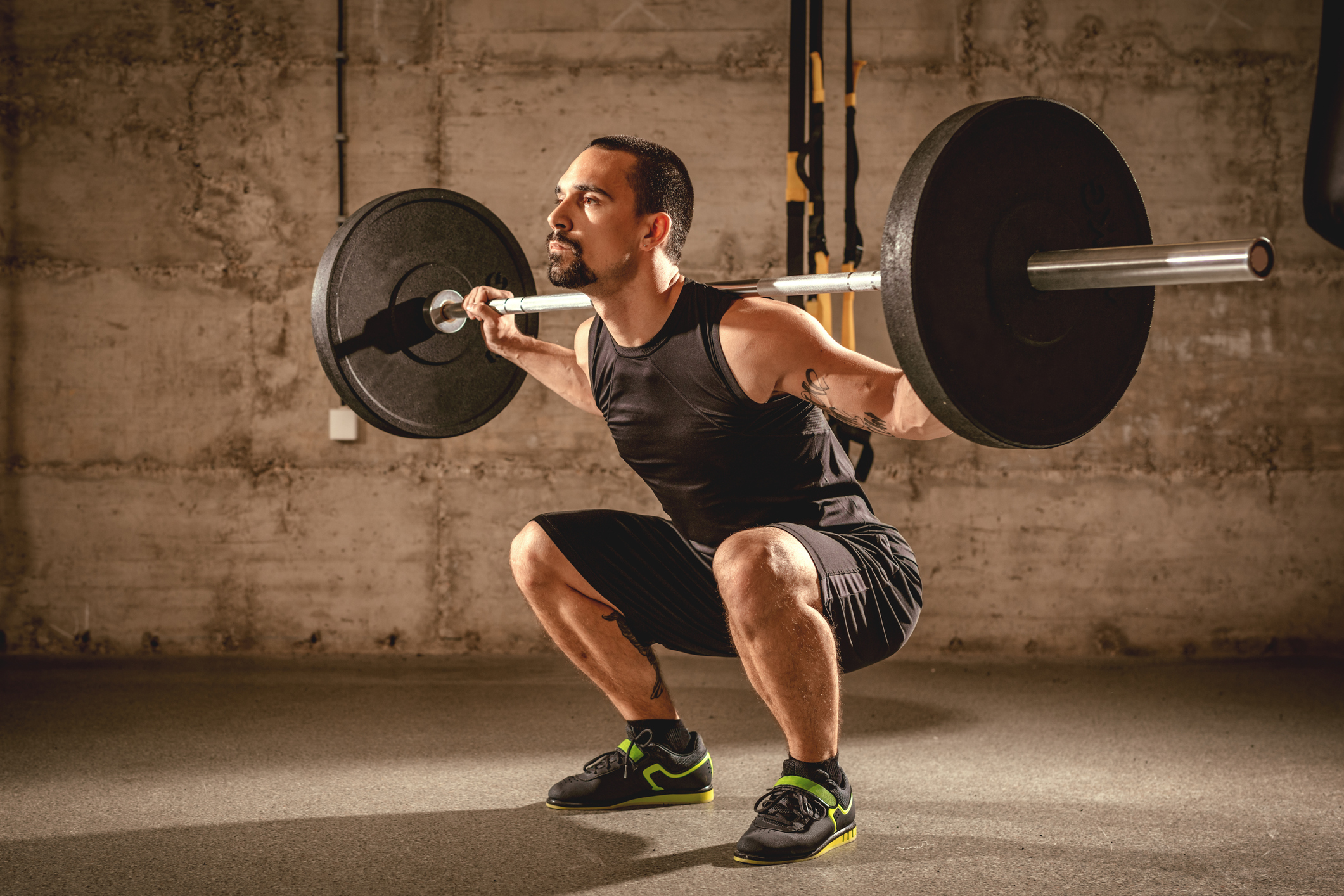

Thank you for your detailed advice and suggestions as I train alone at home. I have started weight training late in life having never been a particularly sporty person. Now I have started to enjoy the feeling of my muscle growth and increasing mobility. I particularly like using newly found kettlebells and a multitude of dumbbell exercises.
Thanks for your valuable advice, Yours, David.
Thank you for the kind feedback, David. Kettlebells and dumbbells are great. Best of luck in your training!